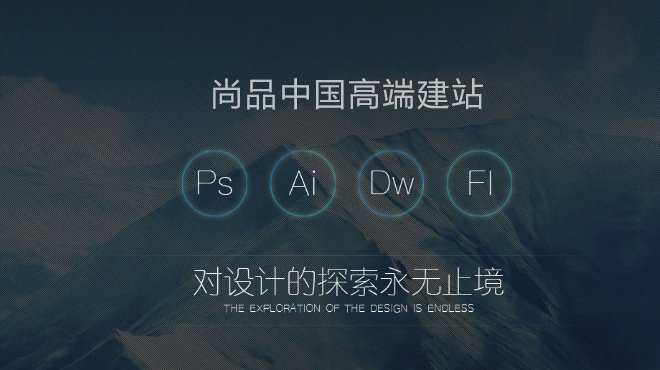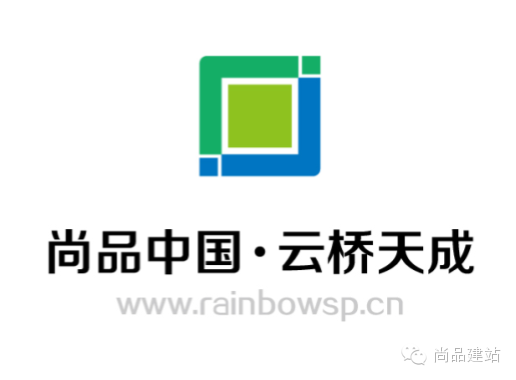As a designer, will you make a plan in 2011? What a real designer designs is not to sensationalize but to achieve the best of both worlds in art and function.. Shallow appreciation is easy to get shallow design is easy to forget. An excellent designer is like a dreamer, creating a dream for users, so that users can feel so real without knowing that they are in a dream. Such a dream needs several elements: excellent color matching, intuitive design, good interactivity and fast response speed. In addition, never underestimate the power of simplicity. In 2011, your design should consider not only laptops and desktops, but also smart phones, netbooks, tablets and other devices. Are you ready?
What are the changes in web design trends in 2011? Focus on 11 web design trends:
1. More CSS3+HTML5
This is something that has been expected for a long time. In the past few years, designers have begun to pay attention to and use CSS3+HTML5, but in 2011 CSS3+HTML5 will be more widely used. Web designers will eventually abandon Flash. Flash is no longer the king of the past, and new technologies (CSS3+HTML5) will take its place. In 2011, Flash gradually faded away, and the magician "HTML5" became the protagonist of the stage:

Of course, it is still too early to say that HTML5 will replace Flash. From the two screenshots above, you can see that there is still a gap between Flash and HTML5. Therefore, in 2011, they will keep their own positions. However, the abuse of Flash by web designers will gradually decrease before 2010. Now few designers will use Flash to design the whole website. They will use HTML5 to replace Flash in some available places, making the website easier and faster. However, at present HTML5 cannot replace Flash, and some effects of Flash HTML5 cannot be realized temporarily. ( High end website construction )
However, the most exciting thing is that CSS3 has become more and more widely used, even surpassing PS in some places (Adobe means there are Yali), because it is really easy to use CSS3 to achieve text shadow, image rounded corners and image transparency. If you don't, it's time to learn about CSS3 and HTML5.
2. Simple color scheme
Nothing is more intuitive and concise than a solid background. Solid colors can be expressed in many ways. Don't always be black and white and grey. It's too impotent. Think more about green, yellow or red as the main color of your website. Of course, it's better to keep using two or three colors. Adjusting the transparency of the color may give you unexpected results.
It's just a simple green color. We can design such a beautiful Twitter visualization tool by adjusting the transparency. You should know that this webpage only uses XHTML/CSS and Javascript!
Red is absolutely classic. If the color matching is well done, it will give people a visual impact. The unique red and friendly text design of the website above makes people have to be impressed
3. The arrival of the mobile Internet era
Smartphones, iPads and netbooks can be seen everywhere. OMG, 2011 will be more obvious now. This means that your design needs to consider more equipment.
Creating a website suitable for mobile devices is not simply removing the gorgeous elements from the original design. It will be a soulless design. Although it is painful to redesign a website supporting mobile devices in the original design. Fortunately, new technology makes everything easier.
With CSS3, it is much more convenient to design mobile web pages. The most important thing is that you can modify a CSS file to complete the modification of the entire website so that users can use different devices to browse the web page.
You can also design a website dedicated to mobile devices, but I believe that the website will be revised soon, based on the current development speed of technology products. More and more mobile websites include browsing options of original websites. If you do not provide this option or your original website is not optimized for mobile network standards, you are not ready for the arrival of the mobile Internet era. According to relevant forecasts, the sales volume of smart phones will surpass that of personal PCs. Get ready to welcome the arrival of the mobile device army.
4. Parallax Scrolling
First, let's explain Parallax Scrolling. Parallax Scrolling is to make the multi-layer background move at different speeds to form a motion parallax 3D effect. Although it is purely visual, the visual experience formed when the content is scrolling is still excellent. The 2011 web design trend is to create such a deep visual effect. Parallax Scrolling can be implemented through some simple CSS techniques or jQuery plug-ins (demonstration site: site 1, site 2). Parallax scrolling can play a good role in secondary elements of web design, such as header, footer or background. However, it is better not to use it in website navigation, which is a bit neither fish nor fowl.
Old Pulteney Row to the Pole uses the Parallax Scrolling special effect in the background of the website. Open the website and pull down to see the effect.
5. More touch screen devices need to be considered in the design
The application of touch screen technology is more and more extensive, and touch screen devices can be seen everywhere. This means that your navigation design is no longer just mouse navigation, you must consider that your design is suitable for touch screen devices. Does your design achieve fingertip navigation?
As designers, we prefer mouse. When the mouse hovers, the link will become highlighted, but there is no so-called hover on the touch screen. How will you show links to touch screen device visitors in your design?
Similarly, how can you make it convenient for your visitors to read your website carefully? This may be controversial on browser standards, or it may be more appropriate to scroll the touch screen horizontally. The layout of the website similar to that of a magazine is more conducive for visitors to browse your website.
Finally, you must consider using liquid layouts in your web design. In 2011, the key point you need to deal with is no longer the screen resolution, but how to make visitors read your website clearly from vertical to horizontal. Your design must be flexible to meet any challenge. Otherwise, you will become the past tense.
6. In depth analysis
Deep analysis is about using dimensions in web design, which can make your web pages more realistic. If used properly, it will be a virtual 3D effect, just like the 3D movie Avatar. Although 3D technology has not yet gone to website design, you still try to use dimensions for design.

Pl á ntate provides a rotatable 3D earth, and flexibly uses such means as shadows and layers.
Jordan activity page, 3D elements are clear and simple, and the design is very eye-catching. (It seems that it has been removed)
7. Large background
The web design application of big background image will be more obvious in 2011. These background images are generally high resolution, covering the website. High definition photos are a good way to quickly capture your readers, which can produce a powerful visual effect - tourists' eyes will unconsciously fall on the broad background.
Of course, the color and content of the background image are very particular. In any case, do not damage the user's experience, or no matter how beautiful the image is, it will be in vain. The picture type tends to be soft and slightly transparent, which should not affect the reading of website text. It should be coordinated and easy to read.

The website above uses a high-resolution image as the background of the website, and the main color of the website is yellow.
This site adds playful animation with its grand scale imagery. Warning: auto-play music.
8. Not rigidly adhere to the top-level domain name
Strictly speaking, this has nothing to do with web design, but it is also a development trend, and more creative domain names will appear The attraction of the com domain name is becoming less and less. The main reason is that you can hardly find a shorter. com domain name. In 2011, people began to focus on. me,. co and. cc. Think about the development of domain names and take the lead, otherwise you may miss the opportunity again.
. me is very good for personal exhibition display pages and blogs.

Demonstration of another. me domain name
9. QR: Quick Response
If you notice that more and more business cards, magazines or other places now have square bar codes, it shows that you have seen this trend in 2011. But what does it have to do with web design? It's really fantastic.
This square bar code is called QR, and its full name is Quick Response (introduced in "QR Code Reader QuickMark"). Use your mobile phone to take a picture of a unique barcode. Like magic, the QR reading software on your mobile phone will open barcode related websites. The most wonderful thing is that you can apply QR to many places. The purpose of applying QR to your website is to let visitors have a shortcut to your mobile web page. You can also track your visitors by placing a special promotion code QR on your website. Haha, you can use QR as your avatar, and then leave messages and comments on other people's websites. The advantages of mobile media in 2011 are more prominent, and web design using this advantage is the most sensible choice and the future development trend.
The above is the QR of Soft Mine Blog If you want to create one, click here
10. Thumbnail Design
Google has introduced its browsing preview technology to browsing users. In the past, we can only see the content of the web page by clicking the link. Now you can preview the content of the link by clicking the magnifying glass and hovering over the link.
If your design is based on Flash, there will be such a problem that the preview will not display your design elements.
In 2011, ordinary Internet users became more sophisticated, and they would like to see more user-friendly navigation design.
 11. Continuous contact/Life Stream
11. Continuous contact/Life Stream
Lifestreaming, an online application that records personal daily activities, includes online content such as blog logs, updates on social networks, online photo albums, chat content and even links to some favorite websites through video feeds or by focusing on a person's online content.
The last point, not the least, is that web design pays more attention to the continuous connection between people, such as Life Stream. The Internet itself is primitive and boring. It is through this open platform that human beings share their everything that they become colorful. In the future, people will also strengthen the communication and interaction between people in the form of lifestreaming. As a web designer, you must understand this trend and deal with it.
In 2011, personal blogs were more active in Twitter feeds (not just links to Twitter pages), and people would pass instant messages to each other through Foursquare, where are u and what are u doing. Undoubtedly, 2011 will take us into a more interactive Internet era.
Personal website, using lifestreaming.
A commercial website integrates a large amount of information on one page.











